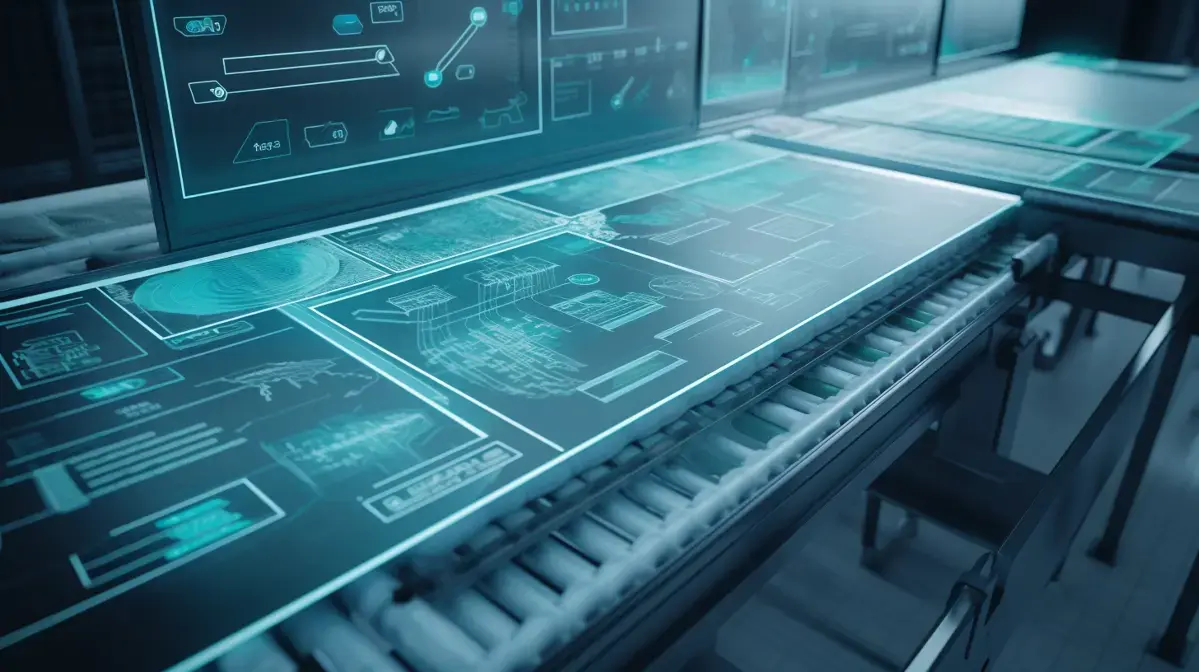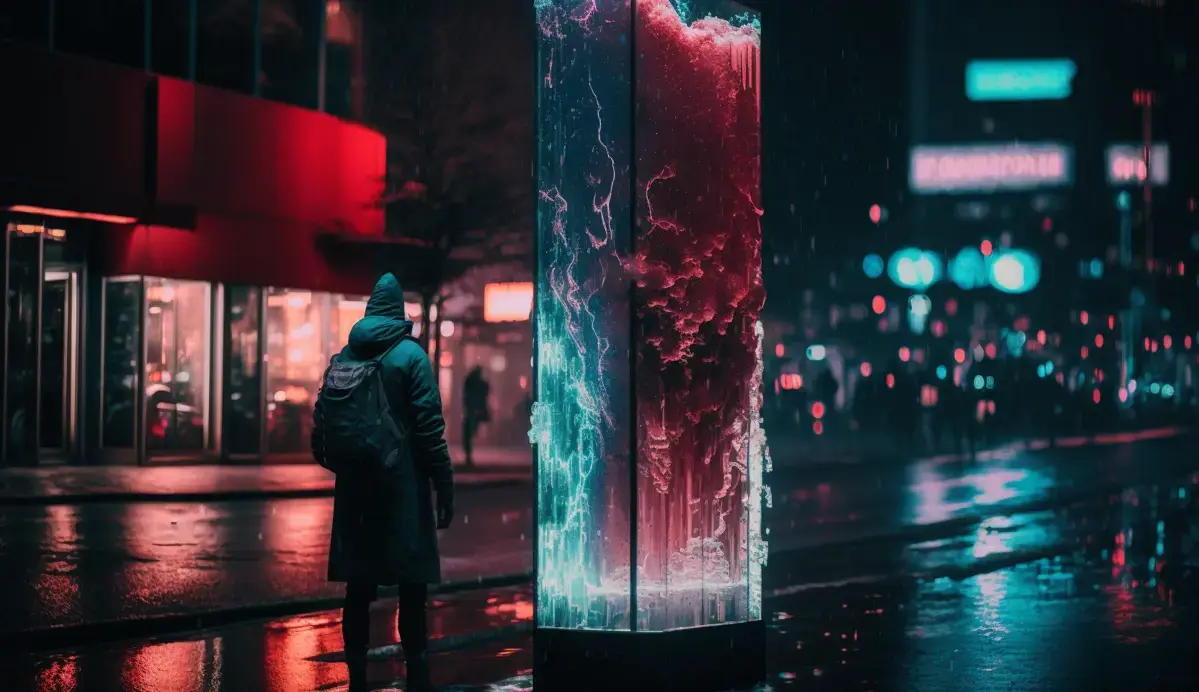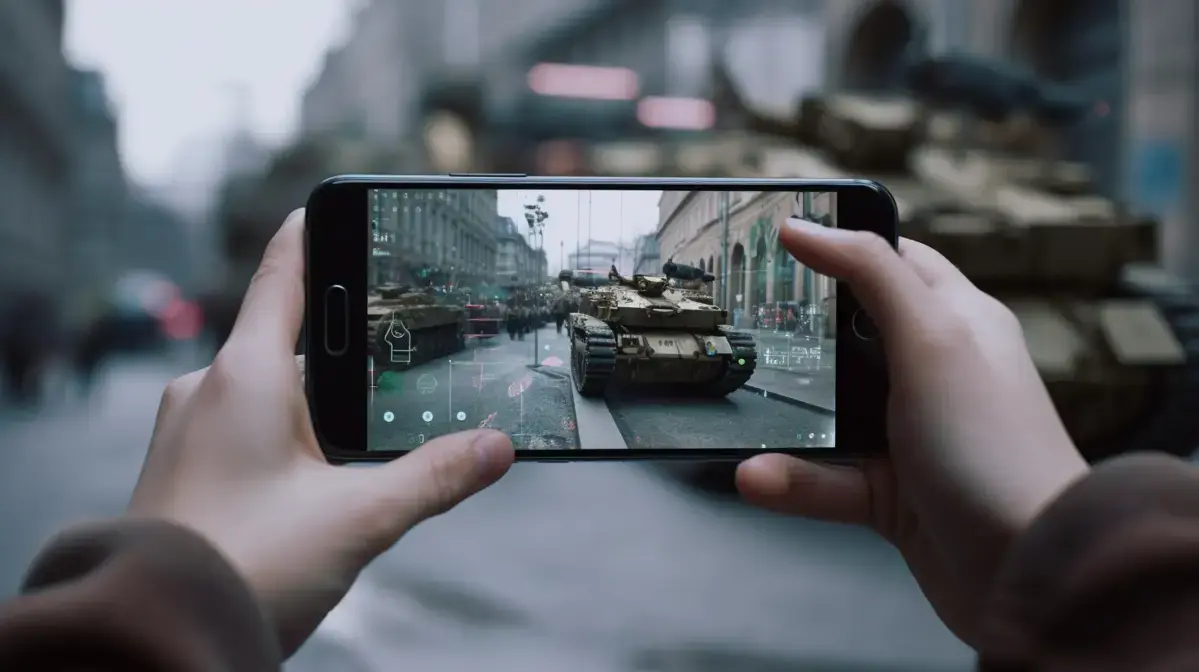Augmented Reality (AR) has become increasingly popular in the field of architectural education and training due to its ability to enhance learning experiences. AR technology enables architectural students and professionals to visualize designs in real-time, allowing them to make more informed decisions before construction begins.
One performant feature of AR is its ability to create interactive 3D models that can be explored from different angles and perspectives. This feature allows students and trainers alike, a better understanding of how a building will look once it’s built while also helping them identify any potential design flaws or problems beforehand.
Another important aspect that makes Augmented Reality an effective tool for architectural education is its portability. With just a smartphone or tablet, architects can take their designs with them anywhere they go without having to carry heavy equipment like blueprints or bulky computers.
Moreover, AR enhances collaboration within team projects by enabling multiple designers working on the same project simultaneously regardless of where they are located physically making it easier than ever before for architects worldwide cooperate on large-scale plans
In conclusion, Augmented reality plays an essential role in transforming architecture today by enhancing both individual learning as well as collaborative environments . It offers unique opportunities not only help learners understand concepts but also accelerates creativity whilst reducing iterations when designing complex structures.
Table Of Contents
- Key Points
- Challenges Faced by Retailers While Implementing AR Technology
- Conclusion: The Impact of Augmented Reality on the Future Of Shopping
- Introduction: Understanding Augmented Reality in Architectural Education
- Interesting Facts
- The Evolution of Architectural Training with the Emergence of Augmented Reality
- Advantages and Opportunities of Incorporating Augmented Reality into Architectural Education
- Enhancing Design Skills through Interactive Learning with Augmented Reality Technology
- FAQs
- Case Studies: Real-World Examples of Successful Implementation of Augmented Reality in Architectural Education
- Challenges and Limitations to Integrating Augmented Reality into Architecture Programs
- Future Directions for the Use of Augmented Reality in Architectural Education and Training
- Key Takeaways

Key Points
- Augmented reality enhances and simplifies the visualization of complex architectural designs.
- It allows for immersive, interactive experiences that provide real-time feedback on design decisions.
- The technology enables collaboration between architects, clients, and other stakeholders in the building process.
- AR can improve training by providing a platform for students to practice hands-on skills in a safe virtual environment before applying them in real-world situations.
Challenges Faced by Retailers While Implementing AR Technology
Augmented Reality (AR) technology has revolutionized the way we shop. Imagine having the ability to visualize how a piece of furniture looks in your living room before buying it, or trying on virtual clothes without ever leaving your home. This is what AR shopping offers – an immersive and interactive experience that blends reality with digital content.
As an expert in this field, the English-born Augmented Reality enthusiast knows firsthand just how transformative AR shopping can be. With years of experience working with cutting-edge tech companies and retailers alike, they have seen the impact that this technology can have on enhancing customer experiences.
One such example is IKEA’s Place app which lets customers preview furniture products in their homes using nothing but their smartphones or tablets. The user simply points their device at any area within their house where they intend to place a piece of furniture and voila. The app projects 3D models onto real-world environments giving you a personalized view like never before.
As more retailers adopt augmented reality technology into their sales strategy; shoppers will increasingly benefit from seamless integration between online browsing & physical purchasing – bridging traditional retail spaces’ limitations by transforming them into interactive showrooms through exciting consumer engagement opportunities powered by Augmented Reality Shopping techniques.
The Impact of Augmented Reality on the Future Of Shopping
Augmented reality (AR) has revolutionized the way people shop. With AR, shopping is no longer just about browsing products online or in-store; it’s an immersive experience that allows shoppers to try on clothes, see how furniture looks in their homes before buying and even test makeup without ever having to leave the comfort of their own home.
As an expert in AR technology, I’ve seen firsthand how this new form of shopping has transformed the retail industry. The ability for customers to visualize products using 3D models overlaid onto real-world surroundings creates a deeply personal connection between them and what they are purchasing. Instead of just looking at static images on a screen or catalog – which can be difficult for some people – Augmented Reality Shopping adds more colors, emotions and senses into the whole process.
For example, imagine being able to virtually try on different outfits with your body shape – choosing sizes that fit perfectly- all without ever setting foot inside a store. That’s exactly what one high-end clothing brand did with its augmented reality app called “Virtual Dressing Room.” Customers could see themselves wearing various items from head-to-toe right from their smartphones — activating designs then dragging-and-dropping clothes onto pictures of themselves superimposed through filters like Snapchat Lens Studio.
The possibilities are endless when it comes to augmenting our daily lives including making online purchases much less daunting because they give us control over every aspect until we have found something perfect: be it material quality texture coloration nuances etc.
Introduction: Understanding Augmented Reality in Architectural Education
Augmented Reality (AR) technology is rapidly transforming many industries, including architecture. In architectural education, AR has become an essential tool in helping students understand complex design concepts and visualize their ideas more realistically. This innovative technology enables architects to create interactive models that provide a real-time experience of their designs.
For the English-born Augmented Reality expert, his foray into this world was initially met with skepticism from fellow architects who were resistant to change and feared the disruption of traditional learning methods. However, he quickly realized how AR could enhance creativity by allowing students to experiment with different design possibilities without being limited by physical restrictions.
The use of AR in architectural education has opened up new frontiers when it comes to collaboration among designers working on complex projects across geographical distances. With virtual meetings now becoming commonplace due to Covid-19 restrictions worldwide; using augmented reality platforms allows teams can review 3D models together remotely while adding annotations or making suggestions directly onto them – creating a better understanding between team members as well as providing valuable feedback early on before any costly mistakes are made.
Overall, there is no doubt that Augmented Reality will continue revolutionizing not just architecture but also other industries where visual representation plays an important role such as medicine or gaming.
Interesting Facts
- According to a survey conducted by the American Institute of Architects, 75% of architects believe that augmented reality will play a significant role in their profession within the next five years.
- The use of augmented reality in architectural education and training allows students to visualize and interact with design concepts in real-time, leading to better understanding and retention of information.
- In addition to architecture, industries such as engineering, construction, and interior design also benefit from incorporating augmented reality into their training programs.
- The use of AR technology can also lead to cost-saving measures by allowing designers and clients alike to view virtual mock-ups before investing large amounts into physical prototypes or full-scale constructions.

The Evolution of Architectural Training with the Emergence of Augmented Reality
Augmented Reality has revolutionized many industries, and its impact on architectural education cannot be overlooked. As an expert in the field, experiencing Augmented Reality for the first time was like being transported into a world where reality meets imagination. Using AR technology to visualize buildings and structures enables architects to showcase their designs with greater clarity and precision.
One notable advantage of using Augmented Reality in architectural education is that it enhances spatial awareness amongst students. With AR technology, students can see virtual models overlaid onto real-life structures which helps them understand how design fits within physical spaces more accurately than traditional methods would allow. Additionally, this technology allows architects to experiment with different materials or textures before implementing a plan physically.
Another advantage of incorporating augmented reality into architecture classrooms is that it makes learning fun by immersing students in interactive environments where they can explore designs as if they were fully built structures. Throughout my years working as an augmented reality educator I have seen firsthand how much student engagement increases when you show them what could ended up looking like through the same devices we are already using every day such as smartphones or tablets.
In conclusion , one must recognize that integrating augmented reality has been proven highly beneficial for both educators teaching architecture classes at universities but also for individuals who want to become knowledgeable about building construction methodologies. Therefore making use of its potential will only continue enhancing educational experiences while creating more robust opportunities down-the-line once graduates hit job markets around Architecture-related fields such interior designing firms etc.
Advantages and Opportunities of Incorporating Augmented Reality into Architectural Education
Augmented Reality (AR) has been a buzzword in the technology industry for many years, but it is only recently that its potential as an educational tool has come to light. As an English born AR expert, she understands firsthand how this groundbreaking technology can revolutionize architectural education.
In the past, architectural students have relied on traditional methods such as models and blueprints to understand complex designs and structures. However, these methods do not offer a fully immersive experience: they lack interactivity and fail to capture the essence of three-dimensional spaces accurately.
This is where Augmented Reality comes in handy. This cutting-edge technology superimposes digital elements onto real-world surroundings giving users access to more detailed information about building systems while providing them with virtual experiences of being inside diverse buildings-both existing or prospective ones-all without leaving their desk chairs.
For instance; imagine being able to evaluate floor plans virtually through holographic representations that give you greater insights into layouts like never before. Or better still; walking through virtual 3D tours of proposed construction projects – pinpointing problem areas beforehand – reducing costs significantly.
By integrating augmented reality into architecture education curriculum today we are bridging creativity with modern day technological advancements which will further enrich contemporary design culture- ushering us towards smarter cities for tomorrow’s generation.
Enhancing Design Skills through Interactive Learning with Augmented Reality Technology
Augmented Reality (AR) is an exciting technology that has been revolutionizing various industries, including architecture. With the use of AR, architects can now create interactive and immersive visualizations of their designs that were previously impossible. This technology has become a crucial tool in architectural education as it allows students to experience buildings and spaces before they are constructed.
As an English-born AR expert, he understands how this innovative technology can enhance the learning experience for students studying architecture. He recalls being amazed by his first encounter with AR when he visited Tokyo several years ago. Walking around Shibuya crossing while using a prototype augmented reality headset allowed him to see digital information projected onto real-world objects in front of him; it was like nothing he had ever seen before.
In terms of education, one example where augmented reality is being used is within design studios where students have access to headsets or devices which allow them to walk through virtual models and interact with them in real-time instead of relying on traditional 2D plans or scale models which lack context. By doing so, they are able to better understand spatial relationships between different elements such as floors levels or room dimensions – something which would be much harder without access.
Overall Augmented Reality offers numerous benefits for both teachers and learners alike – providing new ways for understanding space beyond drawings alone while also offering greater flexibility than previous technologies used within architectural discourse up until recently.
FAQs
Q: What is augmented reality?
A: Augmented reality (AR) is an interactive experience where digital information and virtual objects are overlaid onto the real-world environment using a device such as a smartphone or headset.
Q: How does AR impact architectural education?
A: AR technology provides a new way to visualize and interact with 3D models, allowing students to explore designs in greater detail. This enhances their understanding of spatial relationships and improves their ability to communicate design ideas.
Q: Can AR be used for training architects?
A: Yes, it can. For example, using an AR headset during on-site visits allows architects-in-training to overlay plans onto physical structures, making it easier for them to understand how changes will affect the overall design.
Q: Is there any downside of introducing AR in architectural education/training?
A:While the benefits of integrating this technology into architecture programs are clear–greater efficiency, improved communication between stakeholders, and expanded possibilities. One drawback might be that relying too heavily on these tools could stunt creativity and limit imagination by locking users within confines defined by preprogrammed parameters.

Case Studies: Real-World Examples of Successful Implementation of Augmented Reality in Architectural Education
Augmented Reality (AR) has revolutionized the way architects learn, design and construct their projects. It is a technology that allows them to visualize their designs in 3D, overlaid on the real world environment. With AR, they can see how a building would look like at any time of day or year without actually constructing it.
The benefits of using AR in architectural education are numerous. First and foremost, it enables students to experience immersive learning by creating virtual spaces and environments for them to explore in detail. At the same time, this technology creates an interactive classroom where students can work together collaboratively on projects from anywhere in the world.
One example of how AR is being used effectively today is with historic buildings which need restoration or revitalization efforts. Students can overlay digital models onto these old structures before determining what repairs are required while maintaining authenticity by respecting original details – such as ornamental flourishes or masonry patterns – resulting with more cost-effective efforts than traditional methods used previously.
In conclusion , Augmented Reality has forever changed architecture education through its ability to provide visual aids that improve understanding for both professors who teach it as well as those looking into pursuing careers within this field themselves; not only does this technology save money but also makes learning more effective by providing learners access information anytime they need it .
Challenges and Limitations to Integrating Augmented Reality into Architecture Programs
Augmented reality technology has transformed the way architects learn and design. This innovative tool provides an immersive experience that allows students to visualize their designs in a real-world environment. The incorporation of augmented reality in architectural education not only enhances the learning experience but also helps foster creativity, problem-solving skills, and collaboration.
As an expert in this field, I have witnessed firsthand how AR is revolutionizing architectural education. With AR apps like SketchAR or MagicPlan, students can instantly see 3D models of their creations overlaid onto real-world environments such as classrooms or lecture halls. This interactive learning method enables learners to experiment with different design elements quickly while receiving instant feedback on their work.
Moreover, augmented reality offers a bridge between theoretical knowledge and its practical application by enabling architecture students to encounter complex environmental conditions before construction begins physically – allowing them to identify potential challenges early on; hence they are better equipped with solutions for unforeseen issues when it comes time for implementation.
Overall Augmented Reality has proven itself as one of the most effective tools used by universities’ faculties worldwide (such as University College London) teaching architecture courses today because if implemented correctly, it enables quicker decision making processes due thanks largely due its ability streamline workflow whilst keeping visualisation at forefront, ideal for those who consider themselves more visually orientated.
Future Directions for the Use of Augmented Reality in Architectural Education and Training
Augmented Reality (AR) has been making waves in various industries, and education is no exception. As an English-born AR expert, she hasn’t just witnessed the impact of AR on architectural education – she’s experienced it firsthand. It’s a feeling that can only be described as magical when you see your designs come to life through the power of augmented reality.
Incorporating AR into architectural education opens up limitless possibilities for students and educators alike. The technology enables students to visualize their designs in 3D space, offering a new level of interactivity and engagement that was previously unimaginable.
The benefits are not limited to visualization alone; with AR technology students can simulate real-world scenarios such as natural disasters or building collapses without any risk involved- ensuring safety measures are implemented before construction starts. By integrating different sensory inputs like sound effects or haptic feedbacks into these simulations also allows learners more effective learning experience by immersing themselves deeper within virtual environments.
While there may be some initial hesitation towards adopting this new tech-heavy approach in teaching architecture given traditionalist attitudes amongst higher-level academia; However once people witness its capabilities first-hand like our author did at one demonstration where participants were able walk around inside their own design models with other attendees all simultaneously existing within same Augmented world – any doubts disappear quickly.
Conclusion:
In conclusion, augmented reality technology has paved the way for a new era in architectural education and training. It offers an immersive learning experience that enables students to visualize designs in 3D and interact with them like never before. This technology allows architects to test their designs more efficiently, identify errors early on, save time and money.
The flexibility of augmented reality tools gives architecture students the freedom to modify their design concepts without having to start from scratch. Architects can use AR technology during various stages of project development – from initial ideation through final construction – making it an integral part of the profession’s future success.
As we move forward into a world where digital technologies become increasingly vital at every level within society, architects must embrace these emerging tools fully if they hope not only to stay competitive but also continue pushing boundaries creatively while positively contributing towards sustainable urban environments for all people across diverse regions globally.
Key Takeaways
- Augmented reality can enhance architectural education and training by allowing students to visualize designs in real-time.
- AR can provide a more immersive learning experience that engages students and improves retention of information.
- The use of AR in architecture helps reduce errors, saves time, and promotes collaboration between team members.
- The technology is still evolving rapidly, so educators need to stay up-to-date on the latest advancements to effectively integrate it into their curriculum.





































